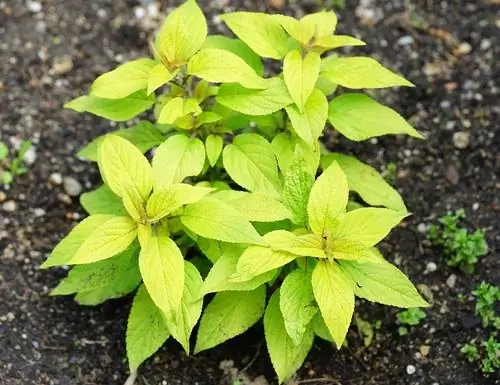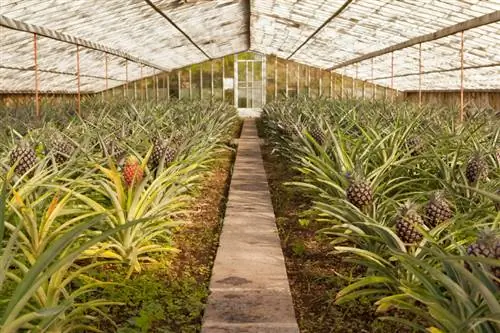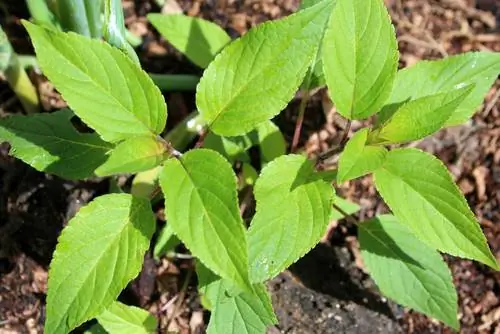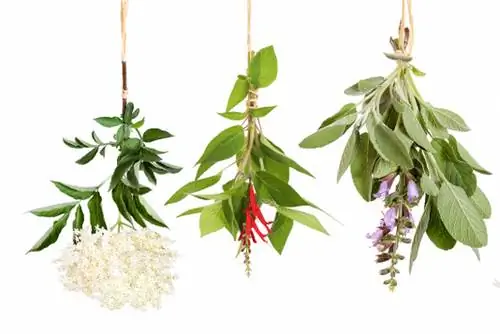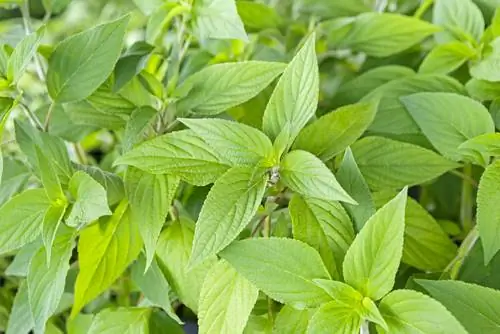- Author admin [email protected].
- Public 2023-12-16 16:46.
- Last modified 2025-01-23 11:22.
Pineapple sage comes from tropical regions and is cultivated in pots in Central Europe as a culinary herb. Because of its robust properties it is planted outdoors, but the plant often does not survive the winter. With appropriate protection you increase your chances of survival.
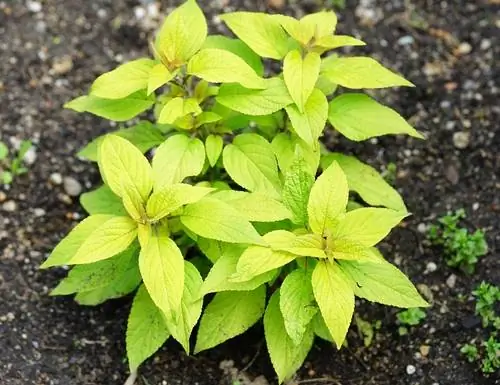
Is pineapple sage hardy?
Pineapple sage is not hardy in Central Europe, but can survive outdoors with protective measures such as leaves, bark mulch or pine branches. Potted plants should be overwintered in frost-free rooms or placed outdoors, isolated and protected.
Outdoor plants
Pineapple sage originally comes from the coniferous and deciduous forests of Mexico and Guatemala. The plant is adapted to regions with mild winters and cannot survive the sub-zero temperatures in Central Europe. In wine-growing regions, you can try to overwinter the culinary herb with appropriate protection made from leaves, bark mulch or fir branches. Beforehand, cut off all parts of the plant above ground to just above the ground. With a lot of luck, the plant will sprout again in spring.
potted plants
Overwintering potted plants outdoors is also only recommended for mild areas, as success is not guaranteed. The substrate in the planter freezes faster in winter. Therefore, you have to wrap the bucket with thick foil (€28.00 on Amazon) or jute bags. For better cold insulation, you can spread straw between the individual layers.
Place the bucket on a block of wood on a south-facing house wall. The bucket should be as protected as possible. Cut the plant back radically and cover the substrate with a thick layer of mulch. On frost-free days, the substrate is lightly watered. The cold protection is only removed in mid-May, otherwise the plant can be damaged by late frosts.
Frost-free wintering
It is better to overwinter in a frost-free winter quarters. You can leave the plant on the windowsill and enjoy the red flowers that appear between October and November. Alternatively, we recommend moving to a cool room with a temperature between five and 15 degrees Celsius. Staircases, winter gardens or bright basement rooms are ideal.
This is how the plant gets through the winter:
- Cut the plant back to the ground
- water occasionally
- Avoid fertilization
- Don’t change locations too often
After winter
Potted plants that have overwintered in the warm are taken out of their quarters and slowly acclimated to the new location. Place the pot in a partially shaded place for one to two weeks. The plant can then be placed in a full sunny spot.

